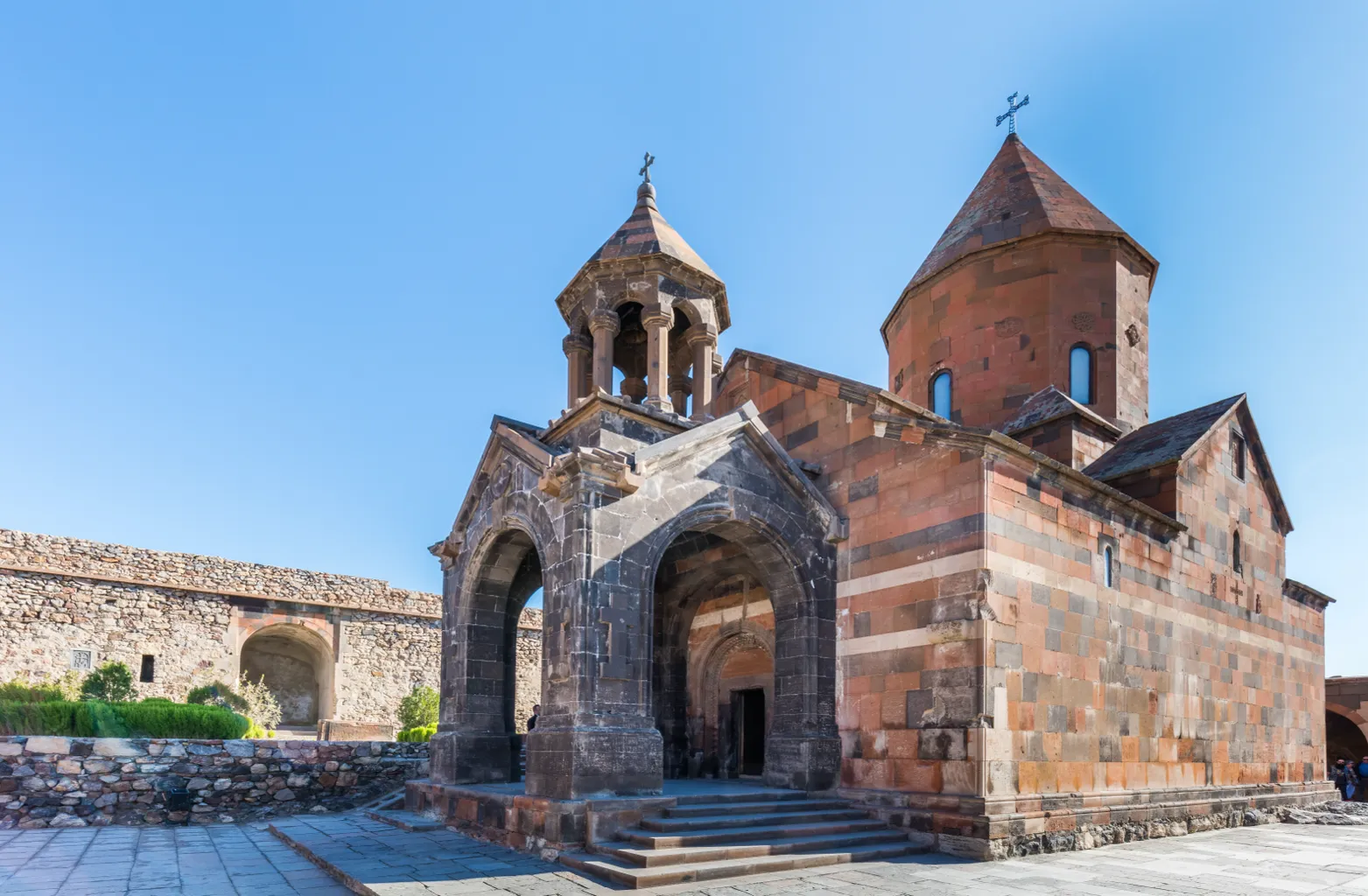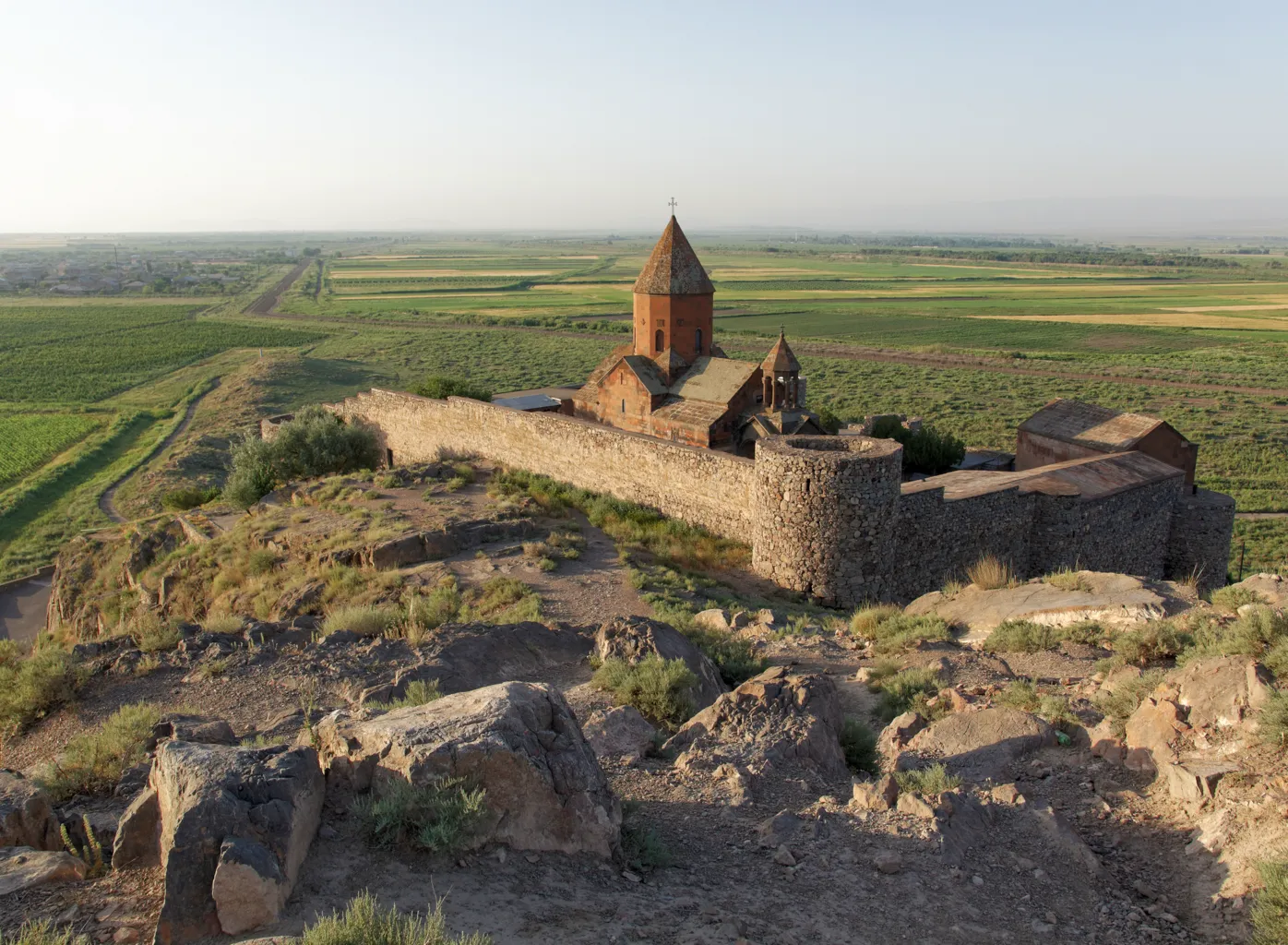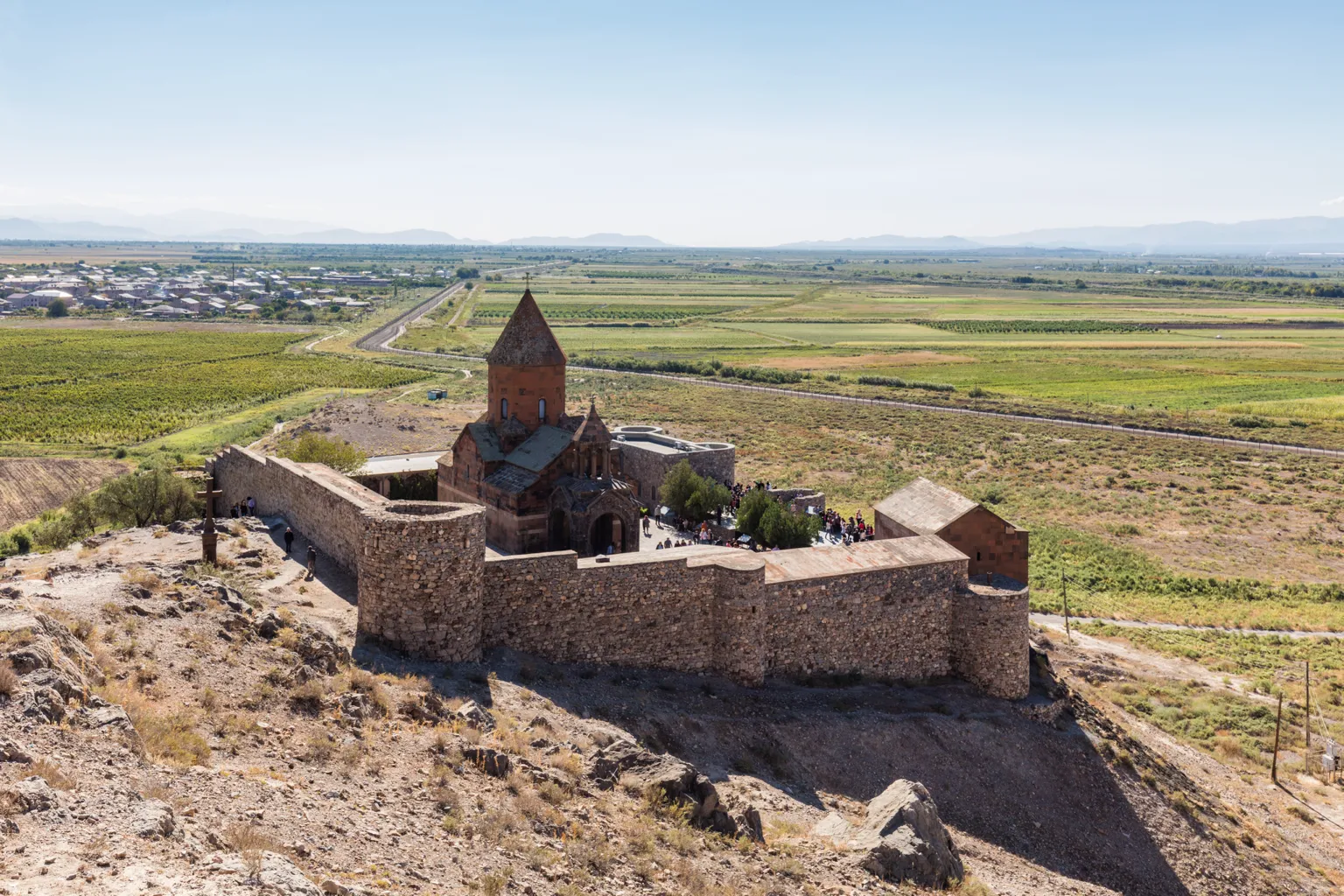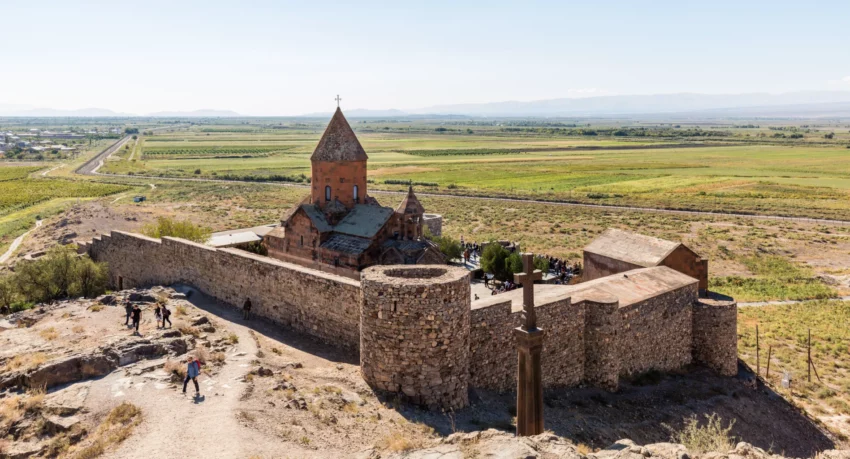Khor Virap Monastery: A Deep Dive into History
Khor Virap Monastery, which means “deep dungeon,” is a significant site in Armenia, located on the Ararat Plain near the border with Turkey. About 8 kilometers south of Artashat, this monastery is steeped in religious and historical importance. Its proximity to the ancient city of Artashat and the scenic backdrop of Mount Ararat make it a compelling destination.
Get your dose of History via Email
The Imprisonment of Saint Gregory
Khor Virap is famous as the prison of Saint Gregory the Illuminator. King Tiridates III of Armenia imprisoned Gregory in this deep dungeon for 13 years. During this time, Gregory endured severe conditions, yet he survived due to the secret aid of a Christian widow who fed him. This miraculous survival eventually led to Gregory converting the king to Christianity, which resulted in Armenia becoming the first nation to adopt Christianity as its state religion in 301 AD.

The Evolution of Khor Virap Monastery
The first chapel at Khor Virap was built in 642 by Nerses III the Builder, dedicated to Saint Gregory. Over the centuries, the site saw numerous reconstructions. In 1662, the larger chapel, known as St. Astvatsatsin (Holy Mother of God), was constructed around the ruins of the old chapel. Today, it serves as the primary church where regular services are held.
Geography and Surroundings
Located just 100 meters from the closed Turkish-Armenian border, Khor Virap is surrounded by lush pastures and vineyards. The Aras River flows nearby, adding to the serene landscape. The monastery’s strategic location offers stunning views of Mount Ararat, creating a picturesque setting for visitors.

Historical Significance
King Artashes I established Artashat around 180 BC, near Khor Virap. This ancient city remained Armenia’s capital until the reign of King Khosrov III. Artashat’s proximity to Khor Virap adds to the site’s historical depth. Before becoming a monastery, Khor Virap served as a royal prison.
Architectural Marvels
The Church of the Holy Mother of God is the centerpiece of Khor Virap. Built in the 17th century, it features a twelve-sided tholobate and dome. The pit where Saint Gregory was imprisoned lies southwest of the main church, beneath the St. Gevorg Chapel. Visitors can descend into the pit through a winding stairway and metal ladder, offering a tangible connection to the site’s profound history.

Cultural Celebrations and Traditions
Khor Virap remains a vibrant pilgrimage site. Armenians visit for baptisms and post-wedding rituals, often performing a matagh animal sacrifice. The deliverance of Saint Gregory is celebrated annually, with light from Khor Virap brought to the Illuminator’s Cathedral in Yerevan on New Year’s Day. This act symbolizes the enduring light of Christianity in Armenia.
Tourism and Modern Visits
The monastery attracts numerous tourists who come to explore its historical and spiritual significance. Souvenir kiosks cater to visitors, and releasing doves towards Mount Ararat is a popular tradition. Khor Virap has hosted notable visitors over the years, including Pope Francis in 2016 and Charles Michel, president of the European Council, in 2021.
Conclusion
Khor Virap Monastery is not just a historical landmark; it’s a living symbol of Armenia’s deep-rooted Christian heritage. Its compelling history, combined with its breathtaking surroundings, continues to draw pilgrims and tourists alike. The monastery stands as a testament to Armenia’s resilience and enduring faith.
Sources:

